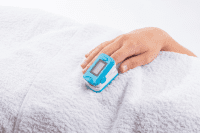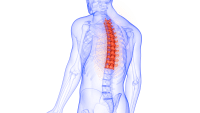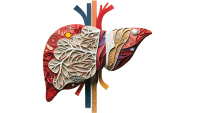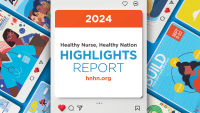Three new preventable conditions added to Medicare’s do-not-pay list
The Centers for Medicare & Medicaid Services (CMS) has added three conditions to its do-not-pay list—complications of surgical-site infections after elective procedures, certain manifestations of poor glycemic control, and deep vein thrombosis or pulmonary embolism after total knee replacement or hip replacement. The new rule went into effect October 1. As with the conditions on the original list, Medicare won’t reimburse hospitals for treating these conditions, and hospitals can’t bill patients, either.
https://www.cms.gov/newsroom
Updated diagnosis and treatment guidelines for rhinitis
Updated guidelines for diagnosing and managing rhinitis have been issued by the Joint Task Force on Practice Parameters (which represents the American Academy of Allergy, Asthma and Immunology; American College of Allergy, Asthma and Immunology; and Joint Council of Allergy, Asthma and Immunology). Key parts of the update are:
• reviews of drugs that have come on the market since the 1998 guidelines were published
• review of evidence regarding combination therapy
• better delineation of the positioning of drugs used to manage rhinitis
• recommendation of intranasal corticosteroids on an as-needed basis
• importance of recognizing comorbidities of allergic rhinitis (including asthma, obstructive sleep apnea, and sinusitis)
• importance of weighing the benefits and risks of oral decongestants in children younger than age 6.
www.jacionline.org/issues/contents?issue_key=S0091-6749(08)X0008-9
Some fruit juices may impair drug efficacy
Grapefruit, orange, and apple juices may reduce oral absorption of certain drugs that undergo intestinal uptake transport, possibly negating drug benefits. In a recent study, healthy volunteers took the antihistamine fexofenadine with either a glass of plain water, grapefruit juice, or water with naringin (a flavonoid glycoside in grapefruit that decreases drug absorption by blocking a key drug uptake transporter). Those who drank the grapefruit juice absorbed half as much of the drug as those who drank plain water. Other drugs affected by grapefruit, orange, and apple juices include etoposide, beta blockers, ciprofloxacin, levofloxacin, itraconazole, and cyclosporine. Researchers recommend that patients take most drugs with plain water.
www.sciencedaily.com/releases/2008/08/080819160050.htm
Obesity doubles risk of diabetes and heart disease
A study using 3,400 adults from the Framingham Heart Study found that subjects who were both obese and diabetic were highly likely to suffer cardiovascular disease (CVD) during their lifetimes. Men with both conditions had nearly a 90% chance of developing CVD; women had almost an 80% chance. Lifetime risk was based on the likelihood that a 50-year-old would develop CVD within the next 30 years.
http://care.diabetesjournals.org/cgi/content/abstract/31/8/1582
Are pediatric vaccination needles too long?
Some experts are recommending that the Centers for Disease Control and Prevention (CDC) revise its needle-length guidelines for thigh and shoulder intramuscular injections in pediatric patients. A new study based on muscle and subcutaneous fat measurements in children found a substantial risk of overpenetration with current needles: For vaccination in the thigh of a child age 1 or older, the 1″ and 1.25″ needles recommended by the CDC would cause significant overpenetration 11% and 39% of the time, respectively. The study used magnetic resonance imaging and computed tomography to determine optimal needle length for children of various ages and sizes at the shoulder and thigh levels.
http://pediatrics.aappublications.org/cgi/content/full/peds.2008-0374v1
Cardiac risk assessment markers: The debate goes on
Are apolipoproteins B (Apo B) and A1 (Apo A1) better at predicting cardiovascular disease (CVD) than low-density lipoproteins (LDL) and high-density lipoproteins (HDL)? Most guidelines recommend cardiovascular risk assessment based on LDL and HDL levels. However, a recent consensus report from the American Diabetes Association and the American College of Cardiology advised clinicians to use Apo B along with LDL levels to assess response to statin therapy in patients at high risk for CVD, diabetes, or both.
A recent large-scale INTERHEART study lends weight to this recommendation. It compared 12,461 patients with acute myocardial infarction (AMI) from the world’s major regions and ethnic groups with 14,637 age- and sex-matched controls to determine the effects of various cardiovascular risk factors. Study data revealed that the nonfasting Apo B/Apo A1 ratio was better than cholesterol ratios at estimating AMI risk in all ethnic groups, in both sexes, and at all ages.
www.ncbi.nlm.nih.gov/pubmed/18640459


















